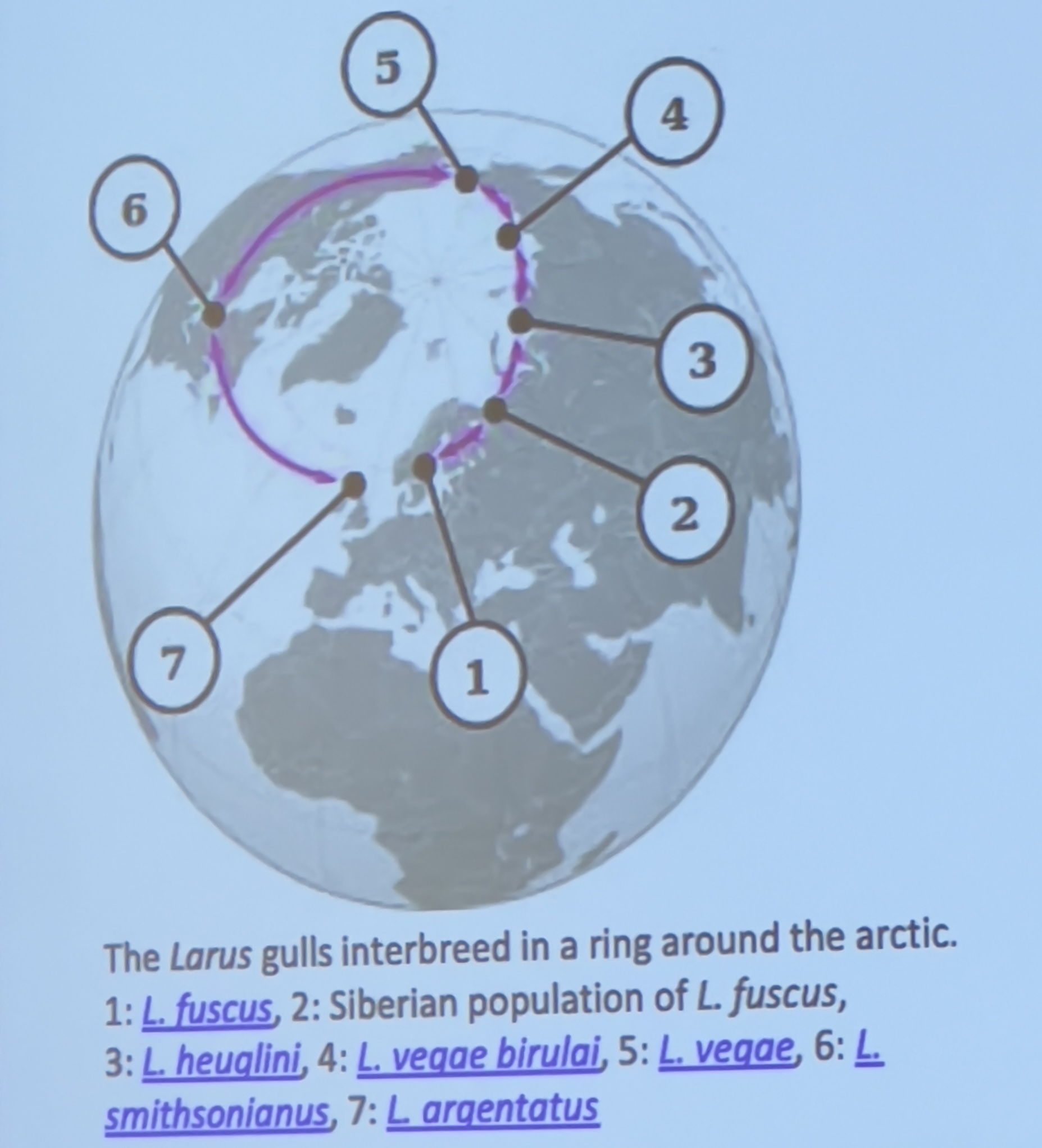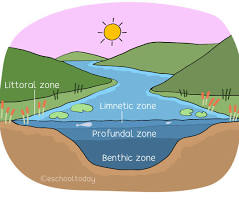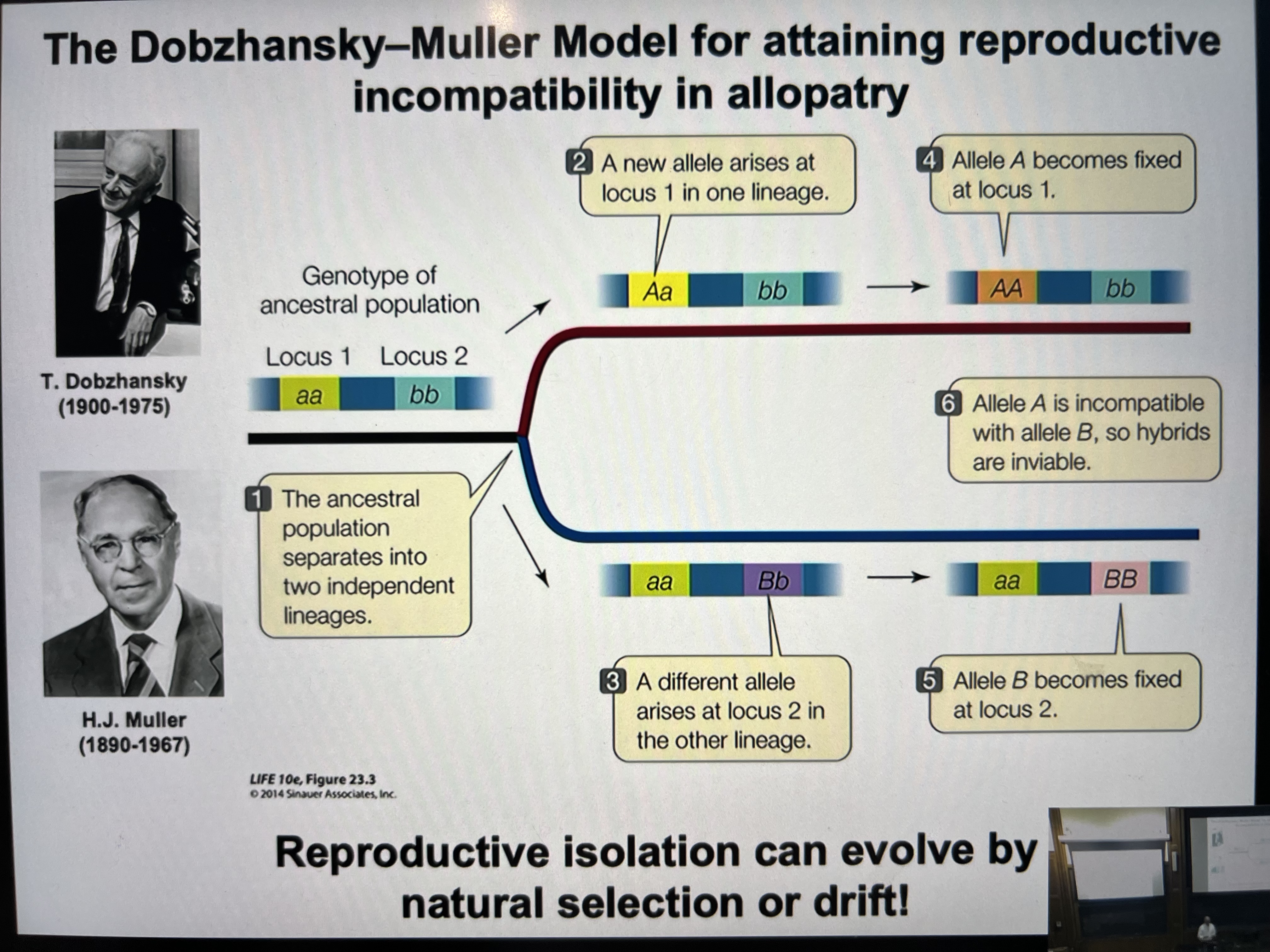Lecture 2- Speciation
1/32
Earn XP
Description and Tags
October 20
Name | Mastery | Learn | Test | Matching | Spaced |
|---|
No study sessions yet.
33 Terms
allopatric speciation
divergence following geographic separation
allopatry
geographic ranges that don’t contact or overlap
vicariance
barrier is imposed upon the population- it splits
vicariance can impose upon multiple lineages, affecting many species in an area
dispersal
a population moves over a barrier to new place
founder populations
a new population established by a small number of individuals from a larger source population
often very small
create a bottleneck that increase the effect of genetic drift
the “Founder Effect”

ring species/speciation
special case involving clinal variation in a ring, gradual genetic divergence, and reproductive isolation between the ends of the ‘ring’
sympatric speciation
occurs without geographic isolation,
involves disruptive selection and assortative mating
sympatric speciation can evolve by disruptive natural selection
limnetic
the open water zone of a freshwater body, such as a lake, that is too deep for rooted plant growth

ploidy
chromosome number
polyploidy
multiplication or increases in chromosome number
autopolyploidy
polyploidy within a species
allopolyploidy
starts with hybridization between related species
non-disjunction
failure of chromosomes or sister chromatids to separate correctly during cell division
speciation
Speciation is the evolutionary process by which populations evolve to become distinct species.
rides the line between macro and micro evolution
anagenesis
evolutionary change along a lineage
cladogenesis
Cladogenesis is an evolutionary splitting of a parent species into two distinct species, forming a clade.
polymorphism
polymorphism is the occurrence of two or more clearly different forms or phenotypes in a population of a species
biological species concept
proposed by Ernst Mayr in the 20th century
“biological species are groups of actually or potentially interbreeding natural populations, which are reproductively isolated from other such groups”
evolutionary species concept
Proposed by GG Simpson
“Lineage evolving separately from others and with its own unitary evolutionary role and tendencies”
cryptic species
one of two or more distinct species that are nearly identical in physical appearance and were once considered to be a single species.
sexual dimorphism
the observable differences in physical and behavioral traits between males and females of the same species
polymorphism
the presence of two or more distinct forms or "morphs" within the same population of a species, which can be physical, genetic, or molecular.
vicariance
A process in which a species' range is divided even though the species has remained in place. This might happen through tectonic action, geologic activity.
secondary contact
Secondary contact is the process in which two allopatrically distributed populations of a species are geographically reunited.
reinforcement
Reinforcement is a process of speciationwhere natural selection increases the reproductive isolation (further divided to pre-zygotic isolation and post-zygotic isolation) between two populations of species.
reciprocal monophyly
Lineages sampled from two groups, A and B, are reciprocally monophyletic if the lineages from group A have a shared common ancestor that is more recent than the most recent common ancestor any of the group A lineages has with a lineage of B , and if the lineages from group B have a shared common ancestor that is more recent than the most recent common ancestor any of them has with a lineage of A.
does speciation require natural selection?
not necessarily!
allopolyploidy
Allopolyploids or amphipolyploids or heteropolyploids are polyploids with chromosomes derived from two or more diverged taxa.
polyploid speciation
the formation of new species through an event that results in a sudden increase in the number of chromosome sets
Dobzhansky-Muller Model
for attaining reproductive incompatability in allopatry
ancestral pop separates into two independent lineages
a new allele arises at locus 1 in one lineage
a different allele arises at locus 2 in the other lineage
allele A becomes fixed at locus 1
allele B becomes fixed at locus 2
Allele A is incompatible with allele B, so hybrids are inviable

Premating/prezygotic isolation
Premating (prezygotic) isolation includes mechanisms that prevent mating or fertilizationfrom occurring in the first place
ex: different mating times, behavioral isolation
secondary contact possible outcomes
fusion of species
extinction of one
formation and stability of a hybrid zone
reinforcement (further speciation)
hybrid speciation
hybrid speciation
In rare cases, the hybrids themselves may be more fit than either parent in a new ecological niche, or become reproductively isolated from both parent populations (often through polyploidy in plants). This can lead to the formation of a new, third species.